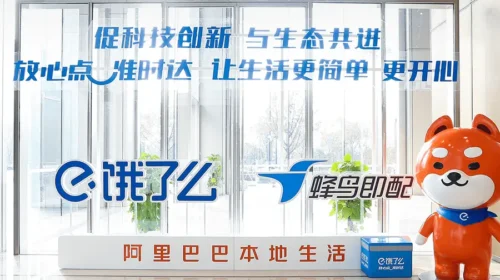At Cusp of a Turnaround, Weimob Finds Bargain in Its Own Beaten-Down Stock

The provider of e-commerce services to small and medium-sized enterprises wins back market favor after a third-quarter business rebound
Key Takeaways:
- Weimob’s SaaS orders rose 30% year-over-year in the third quarter, as it logged a 30% quarter-on-quarter jump in gross advertisement billings
- The e-commerce software provider has bought back its shares nine times in the last month and received a vote of confidence from JPMorgan, which recently boosted stake in the company
By Ken Lo
E-commerce software as a service (SaaS) provider Weimob Inc. (2013.HK) has felt the pain of its customers these last two years, mostly small and medium-sized e-commerce merchants that have suffered from depressed demand and business disruptions during the pandemic.
The former highflyer, which piggybacked to success on the hugely popular WeChat social networking platform, has recorded more than 2.5 billion yuan ($345 million) in losses over the past two and a half years since the global pandemic began. Weimob’s shares, which once traded as high as HK$30 in February last year, tanked more than 80% in tandem with its fading fortunes, hovering between HK$3 and HK$5, testing investor patience.
But a business update published by Weimob last Wednesday may finally show some glimmers of hope for the embattled company. That report showed Weimob’s SaaS orders grew 30% year-on-year in the third quarter. Its gross advertisement billings jumped by a similar 30% to 2.87 billion yuan on a sequential basis, but fell slightly by 5% year-on-year. And for at least one month during the quarter, September, gross advertisement billings rose year-on-year for the first time in 2022, signaling that its business may be on a road to recovery.
Weimob’s shares shot up for three straight trading days after the announcement, gaining nearly 43% cumulatively through Monday this week. They are still down about 10% year-to-date, though that’s far better than the massive selloff that has seen the benchmark Hang Seng Index plunge 30% this year over concerns about China’s slowing economy.
For Weimob, at least, the good news keeps coming. The company announced the official launch of its new WOS business operating system at the end of last month, which incorporates its 10 years of experience to meet the operational needs of its customer base of online merchants. The system helps those companies by integrating Weimob’s hodgepodge of tools and systems into a single ecosystem, making life more efficient and cost-effective for users.
Big bank boosts stake
As its situation improves, Weimob appears to be getting a vote of confidence from at least one major institutional investor. According to a Hong Kong Stock Exchange filing, JPMorgan increased its stake in the company by 10.46 million shares to 6.02% on Oct. 25, its first increase in the the past four months. Weimob has also been a big fan of its own shares, buying back 16.86 in nine different transactions after its shareholders gave it the nod to buy back up to 10% of its issued shares at the company’s annual general meeting in late June.
The positive update is a welcome reversal from mid-August, when Weimob released half-year results that were far less encouraging. Those results showed its net loss expanded by 9% to 609 million yuan in the first six months of 2022, while its adjusted net loss soared by five times to 567 million yuan, far worse than market expectations.
In addition to suffering under China’s tighter Covid-control measures in the second quarter, the company also took a hit from its high investment in the ecosystem upgrade that is now largely complete. During the period, its R&D expenses jumped 54% to 470 million yuan, accounting for 52% of total revenue. However, with the official launch of the new WOS business operating system now in the past, R&D expenses are expected to come down in the future.
According to Weimob’s IPO prospectus from late 2018, the company had 15% market share at that time, making it the largest provider of third-party services for SMEs on WeChat, the flagship social medial platform developed by Tencent (0700.HK).
With nearly 1.2 billion monthly active accounts, WeChat has emerged as a force in its own right for e-commerce merchants looking to reach consumers. But such firms typically lack special resources like marketing and operation systems tailored to the WeChat ecosystem. That’s where Weimob comes in, offering software and related services that enable e-commerce companies to build their own brands, storefronts, applet websites and sales teams on WeChat.
But its strong association with WeChat can be a double-edged sword, as members of that ecosystem often see their revenue rise and fall together with Tencent’s online advertising business. Weak demand for internet services, and from education and finance companies, caused Tencent’s online advertising revenue to fall 18% year-on-year in the first half of 2022. Weimob’s merchants tightened their advertising budgets in tandem, causing Weimob’s gross billings from merchant solutions to fall 25.4% year-on-year to 4.21 billion yuan in the first half of the year. As Tencent’s online advertising revenue rebounded to grow 5% year-over-year in the third quarter, Weimob’s gross billing from merchant solutions also improved but was still down 5% year-over-year.
Major acquisitions
At the end of 2020, Tencent announced it would invest 10 billion yuan on an SaaS development plan. A main plank of that was called “One Cloud, One Terminus,” referring to Tencent’s cloud infrastructure, and WeChat’s ability to provide connectivity from that down the food chain to businesses in its ecosystem and ultimately to consumers. Weimob and other partners play a crucial role in the “One Terminus” part of that equation, by helping to connect the cloud infrastructure on one side and businesses and ultimately consumers at the other end.
Seizing on the importance of its place in the Tencent plan, Weimob embarked on a shopping spree over the last two years, mostly buying companies to bolster its SaaS ecosystem on WeChat. Its purchases have included the 220 million yuan acquisition of XiangXinYun, a large digital service provider for retail operations in China, and the 510 million yuan acquisition of a 51% stake of Shanghai Heading Information Engineering to strengthen the retail layout of convenience store chains, supermarkets and commercial properties.
While enhancing its product offerings, the purchases have also put Weimob under considerable financial pressure, with total liabilities at the end of June up 13.1% year-on-year to 5.9 billion yuan. As it loses money and spends on acquisitions, the company’s cash fell 29.4% to 2.88 billion yuan at the end of June, from 3.81 billion yuan six months earlier, which included $600 million it raised by selling convertible bonds in May last year.
In terms of valuation, Weimob looks relatively undervalued with a price-to-sales (P/S) ratio of just 2.45. That compares with higher ratios for software majors like Kingdee International (268.HK), Ming Yuan Cloud (909.HK) and Linklogis (9959.HK), which trade at 8.6 times, 3 times and 4.9 times respectively. That shows investors aren’t flocking back to Weimob’s comeback story just yet, and instead may be waiting to see if its nascent rebound continues in the fourth quarter.
To subscribe to Bamboo Works weekly free newsletter, click here






